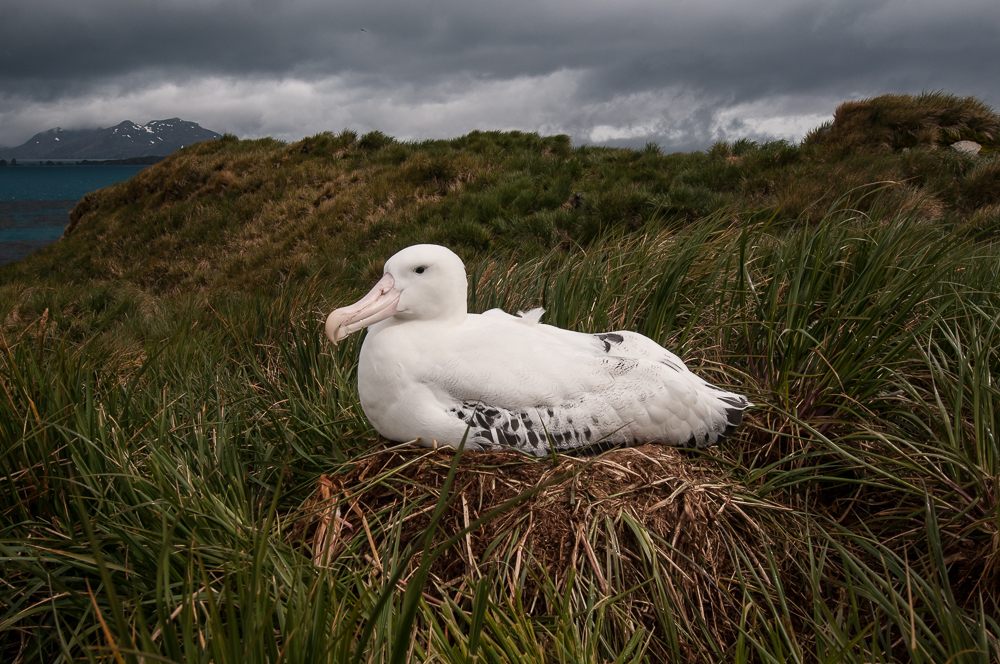 A breeding Wandering Albatross on Prion Island, photograph by Anton Wolfaardt
A breeding Wandering Albatross on Prion Island, photograph by Anton Wolfaardt
Victoria Warwick-Evans (British Antarctic Survey, Cambridge, UK) and colleagues have published open access in the journal Conservation Biology on differences in foraging areas for two South Atlantic Wandering Albatross island populations.
The paper’s abstract follows:
“Spatial segregation in at-sea distribution is frequently observed in seabirds and can have important implications for conservation and management. Globally, many albatross and petrel populations are declining due to bycatch in fisheries. In South Georgia, the decrease in wandering albatrosses (Diomedea exulans) differs among breeding sites, which could reflect segregation in foraging areas, leading to differing degrees of overlap with particular fishing fleets and hence unequal bycatch risk. We investigated whether spatial segregation could explain the different rates of population decline of wandering albatrosses at South Georgia. We tracked wandering albatrosses from 2 breeding sites at South Georgia, Prion Island, and Bird Island, located 50 km apart. We investigated potential causes of spatial segregation with species distribution models and by comparing wind conditions among sites. Overlap with fisheries was quantified for each population. Although overall distributions were from the Antarctic to the subtropics, virtually all wandering albatrosses from Bird Island foraged only to the west of the island group, whereas those from Prion Island foraged to the east and west. Preferred habitat characteristics were similar at both colonies, and waters to the east and west provided foraging habitat. Wind conditions when birds departed were also similar at the 2 sites. Because neither habitat specialization nor wind conditions appeared to be factors in the observed spatial segregation among colonies, this segregation likely reflected a combination of past experience, information exchange, and cultural evolution. Breeding birds from both sites overlapped most with Chinese squid jiggers, Argentinian trawlers, and South Korean set (demersal) longliners, but the spatial segregation led to a higher overlap with demersal longline, demersal trawl, and pelagic longline fisheries by wandering albatrosses at Bird Island, which could have resulted in the faster population decline. Ours is one of the first studies to demonstrate how spatial segregation may affect population dynamics, which has important implications for the conservation of this globally threatened species.”
Reference:
Warwick-Evans, V., Pearmain, E.J., Thorne, L. & Phillips, R.A. 2025. Spatial segregation and bycatch risk as potential drivers of population trends of wandering albatrosses at South Georgia. Conservation Biology DOI: 10.1111/cobi.70126.
John Cooper, Emeritus Information Officer, Agreement on the Conservation of Albatrosses and Petrels, 26 August 2025

 English
English  Français
Français  Español
Español